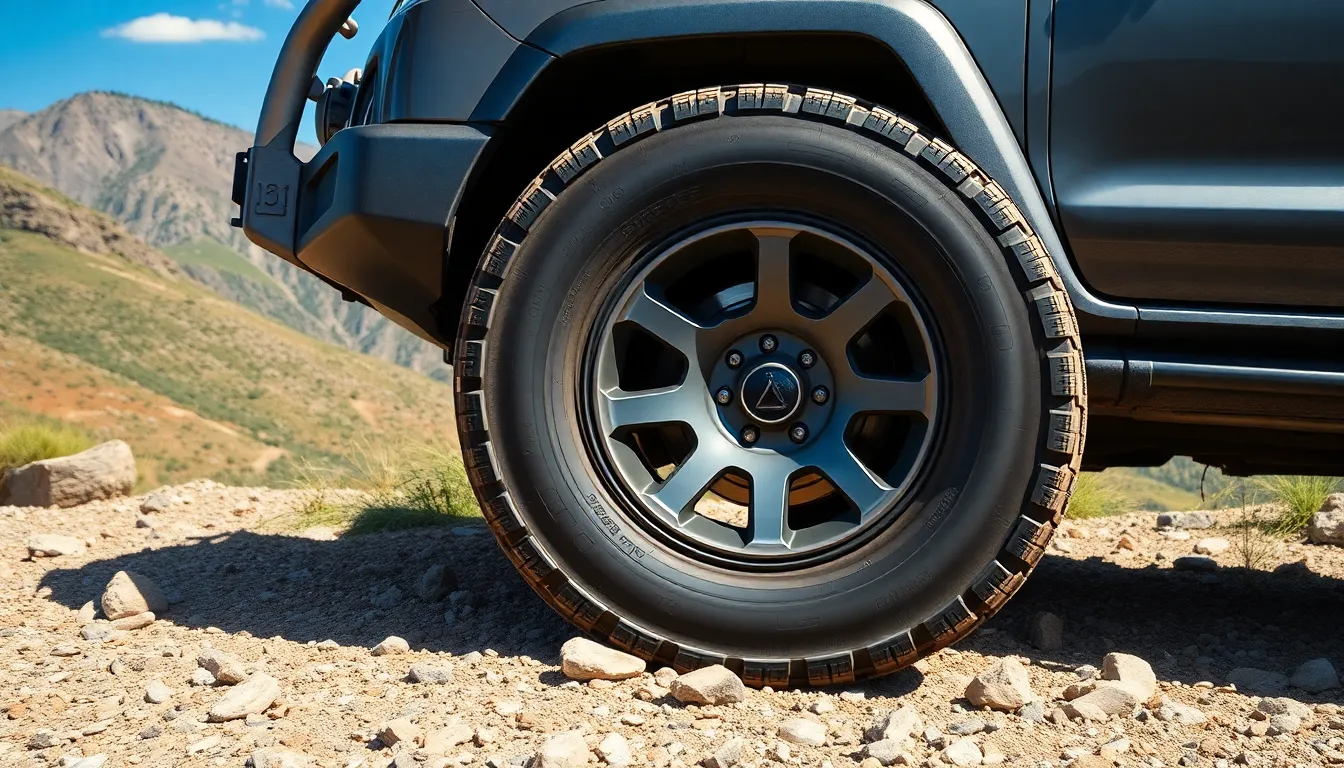Wondering what exactly “255 75 R17” means in inches? This tire size designation might look like a mysterious code, but understanding these numbers is essential when you’re shopping for new tires or trying to determine if a particular size will fit your vehicle.
When you break down tire measurements like 255/75R17, each number represents a exact dimension of the tire. The first number (255) refers to the width in millimeters, while the second (75) indicates the aspect ratio, and R17 shows the wheel diameter in inches. Converting these measurements to inches helps many drivers better visualize the actual size of the tire they’re considering for their truck, SUV, or other vehicles.
Understanding Tire Size Notation: 255/75 R17
Tire size notations like 255/75 R17 follow a standardized format that contains crucial information about your tire’s dimensions. Each component in this alphanumeric code represents exact measurements that affect your vehicle’s performance, handling, and compatibility.
The first number “255” indicates the tire’s width in millimeters, measured from sidewall to sidewall. This measurement determines how much of your tire contacts the road surface, influencing traction and handling characteristics.
Following the width is “75,” which represents the aspect ratio or profile ratio. This percentage tells you the tire’s height from rim to tread as a proportion of its width. In this case, the sidewall height equals 75% of the 255mm width.
The “R” in the notation stands for “Radial,” referring to the tire’s construction type. Radial tires feature layers that run radially across the tire from bead to bead, perpendicular to the direction of travel. Most modern passenger vehicles use radial tires due to their superior handling, comfort, and durability compared to older bias-ply designs.
Finally, “17” specifies the wheel diameter in inches, measuring from one end of the wheel to the other through the center point. This number must match your vehicle’s wheel size exactly for proper fitment.
Understanding these components helps you make informed decisions when shopping for replacement tires. The wrong tire size can compromise your vehicle’s performance, fuel efficiency, speedometer accuracy, and safety. Liam Kohn, our senior tire specialist, has seen countless customers experience improved handling after switching to correctly sized tires for their vehicles.
Breaking Down the 255/75 R17 Tire Size
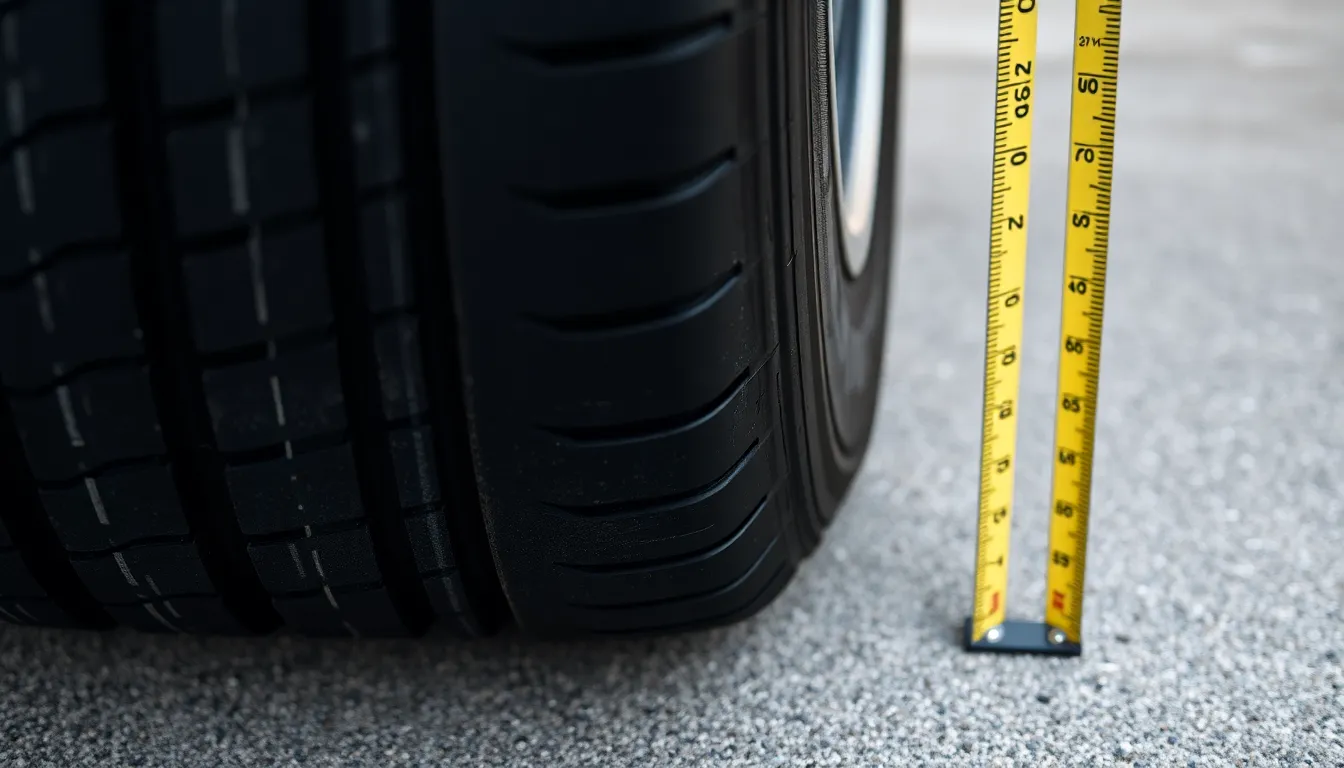
The 255/75 R17 tire size contains exact measurements that determine how the tire fits and performs on your vehicle. Understanding these numbers helps you make informed decisions when purchasing new tires.
What the Numbers Mean
The first number, 255, represents the tire’s width in millimeters measured from sidewall to sidewall. Converting this to inches gives you approximately 10.0 inches (255 ÷ 25.4 = 10.0). The second number, 75, indicates the aspect ratio, meaning the sidewall height equals 75% of the tire’s width. This translates to a sidewall height of about 7.5 inches (10.0 × 0.75 = 7.5). When combined with the 17-inch rim diameter, these measurements result in an overall diameter of roughly 32.1 inches (17 + 2 × 7.5 = 32.1).
| Measurement | Value |
|---|---|
| Tire Width | 10.0 inches |
| Sidewall Height | 7.5 inches |
| Rim Diameter | 17 inches |
| Overall Diameter | 32.1 inches |
Liam Kohn, our senior tire specialist, often points out that many customers don’t realize the 255/75 R17 size is about 0.45 inches larger in diameter than a 265/70 R17 tire, which can significantly affect vehicle performance.
The “R” Designation Explained
The “R” in 255/75 R17 stands for radial construction, the most common tire construction type used in modern vehicles. Radial tires feature fabric layers with cords running radially (at 90 degrees to the direction of travel) across the tire from bead to bead. This design provides superior flexibility, enhanced durability, and better road grip compared to older bias-ply construction.
Radial tires deliver improved handling characteristics, making them ideal for both everyday driving and more demanding conditions. They’re particularly well-suited for light trucks and SUVs that commonly use the 255/75 R17 size. Kohn has shared that customers frequently report noticeable improvements in ride comfort after switching to radial tires from older construction types.
Converting 255/75 R17 to Inches
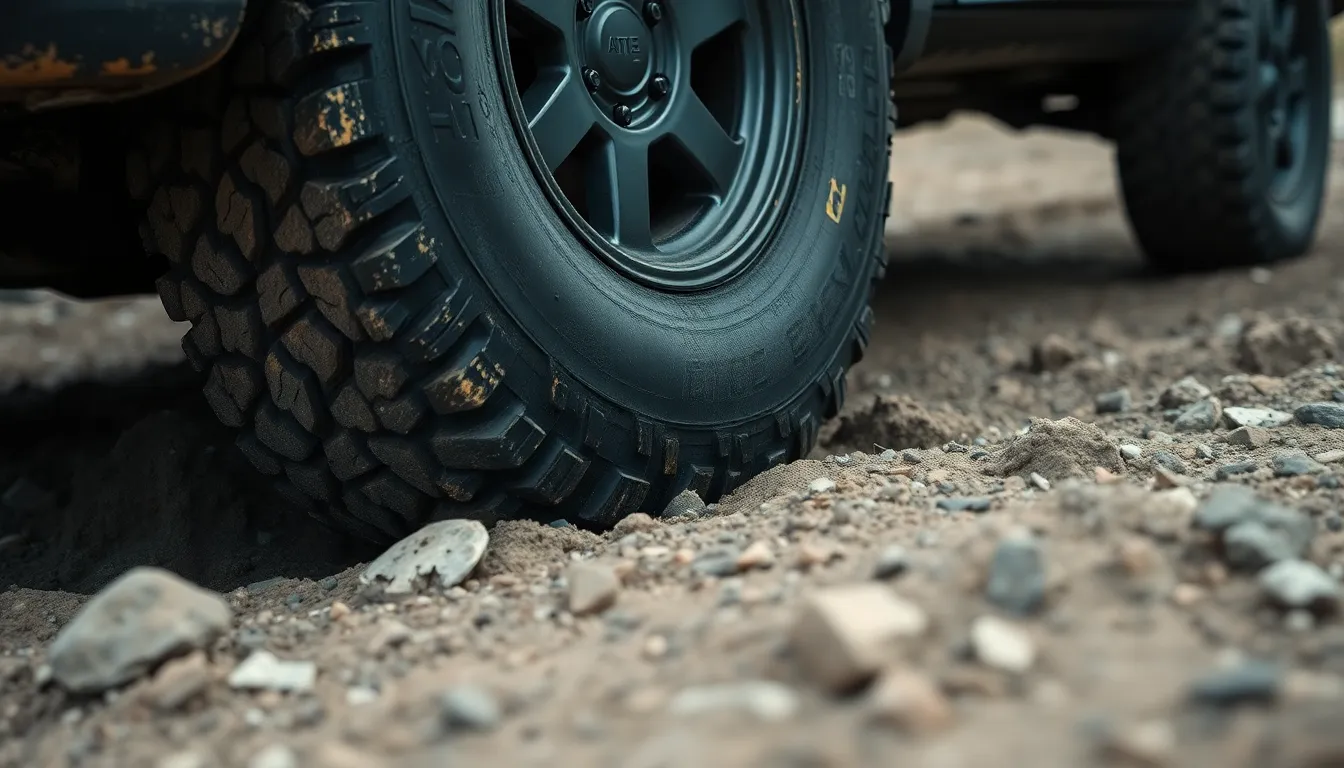
Converting a tire size like 255/75 R17 into inches provides a clearer understanding of its actual dimensions for proper vehicle fitment. This conversion breaks down each component of the tire size designation into standard imperial measurements.
Calculating the Overall Diameter
The overall diameter of a 255/75 R17 tire measures approximately 32.1 inches. This measurement combines the 17-inch wheel rim diameter with twice the sidewall height (2 × 7.5 inches). Understanding the total diameter helps determine whether a tire will fit within your vehicle’s wheel well without rubbing against suspension components or bodywork. Senior tire specialist Liam Kohn often points out that the 255/75 R17 size provides excellent ground clearance for off-road enthusiasts while maintaining good on-road manners.
Determining the Sidewall Height
The sidewall height of a 255/75 R17 tire equals 7.5 inches, calculated as 75% of the tire’s width. Starting with the width measurement of 255mm (approximately 10.0 inches when converted), multiply by the aspect ratio of 75% to find the sidewall height. Tires with taller sidewalls like these offer enhanced ride comfort and better absorption of road imperfections. Many customers report to Kohn that switching to this tire size has significantly improved their driving experience on rough terrain, noting the tire’s ability to flex appropriately over obstacles while maintaining stability.
| Measurement | Value |
|---|---|
| Tire Width | 10.0 inches |
| Sidewall Height | 7.5 inches |
| Rim Diameter | 17 inches |
| Overall Diameter | 32.1 inches |
Actual Dimensions of a 255/75 R17 Tire
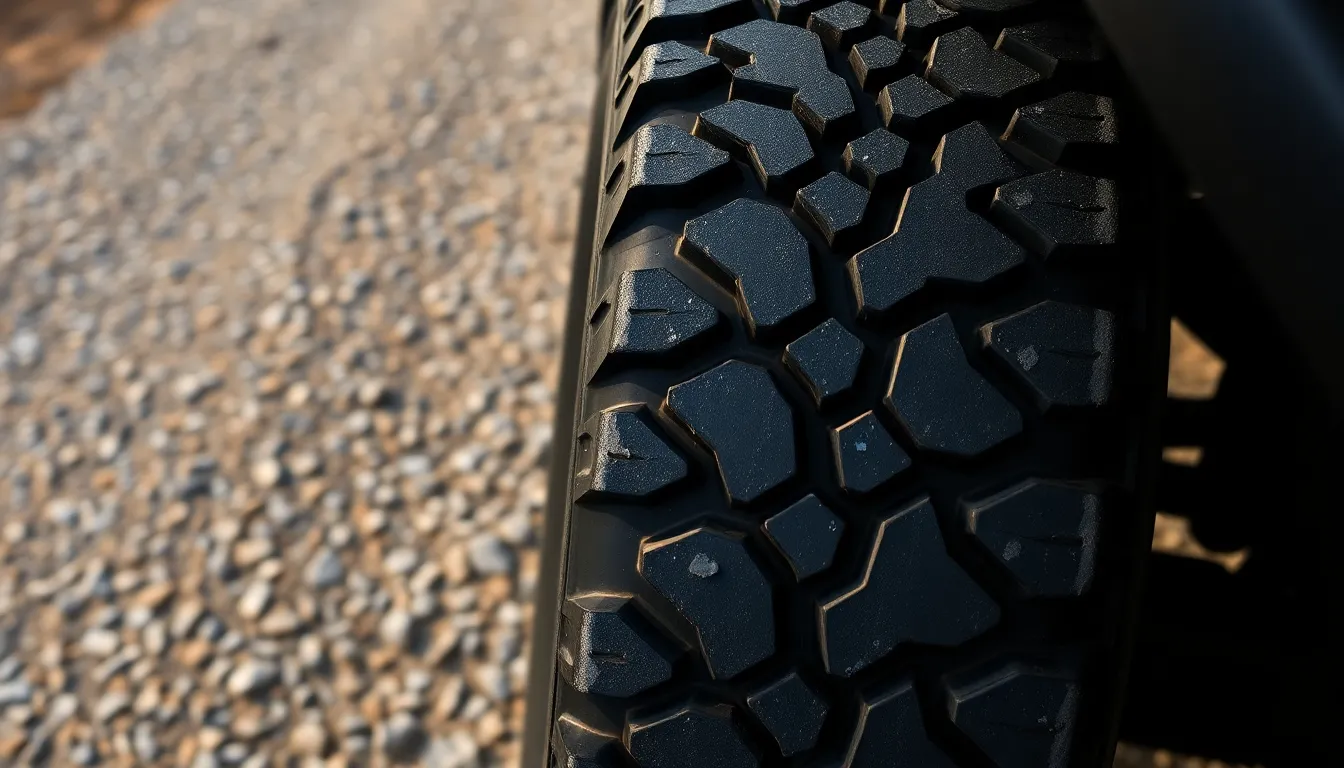
A 255/75 R17 tire’s dimensions can be understood more intuitively when converted from the metric-imperial hybrid notation to inches. These measurements reveal the tire’s true size and help you determine compatibility with your vehicle’s specifications.
Width in Inches
The width of a 255/75 R17 tire measures exactly 255 millimeters across the tread, which converts to 10.0 inches. This measurement represents the tire’s footprint and directly impacts how the tire grips the road. A 10-inch width provides substantial traction for trucks and SUVs while maintaining good stability during cornering. According to Liam Kohn, senior tire specialist, “Customers with light trucks frequently comment on improved handling when using the 10-inch width of the 255/75 R17 compared to narrower options.” The 10-inch width sits in the sweet spot for many off-road enthusiasts who need adequate grip on various terrains without excessive rolling resistance on highways.
Height and Total Diameter
The sidewall height of a 255/75 R17 tire reaches approximately 7.5 inches, calculated as 75% of the 255mm width. When combined with the 17-inch wheel diameter, the overall diameter totals 32.1 inches (17″ + 2 × 7.5″). This important overall diameter provides excellent ground clearance for off-road applications while maintaining proportional aesthetics on larger vehicles. The tire’s circumference measures between 100.5 and 100.7 inches, resulting in approximately 630 revolutions per mile during normal driving conditions. Kohn notes, “Many off-road drivers appreciate the 32.1-inch diameter of this tire size for tackling obstacles without sacrificing on-road comfort.” The 7.5-inch sidewall height also contributes to improved ride quality by absorbing road imperfections more effectively than lower-profile options.
| Dimension | Inches | Millimeters |
|---|---|---|
| Width | 10.0″ | 255 mm |
| Sidewall Height | 7.5″ | 191 mm |
| Overall Diameter | 32.1″ | 814 mm |
| Wheel Diameter | 17″ | 432 mm |
| Circumference | 100.5″-100.7″ | 2556 mm |
| Revolutions/Mile | ~630 | – |
The recommended wheel width range for mounting a 255/75 R17 tire spans from 6.5 to 8.5 inches, providing flexibility for different wheel styles while maintaining proper tire performance. This tire size particularly suits trucks, SUVs, and other larger vehicles requiring substantial load capacity and ground clearance.
Comparing 255/75 R17 to Other Common Tire Sizes
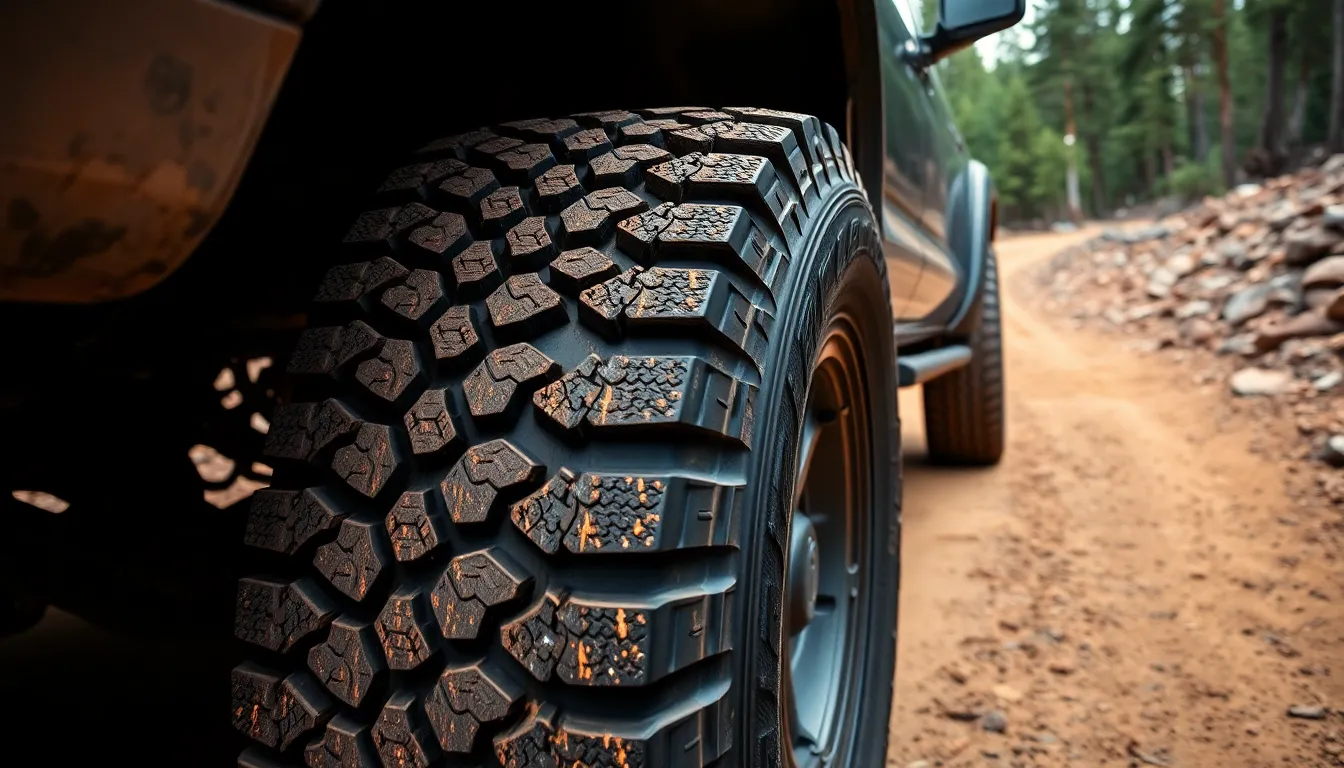
The 255/75 R17 tire size has distinct dimensional differences when compared to other popular tire sizes in the market. These differences directly impact vehicle performance, speedometer accuracy, and overall driving experience.
255/75 R17 vs. 265/70 R17
The 255/75 R17 tire is approximately 0.45 inches larger in overall diameter than a 265/70 R17 tire. This size difference creates about a 1.4% speedometer error, meaning your vehicle’s actual speed will be slightly faster than what your speedometer displays. Even though the 265/70 R17 having a wider tread (265mm vs 255mm), the taller aspect ratio of the 255/75 R17 (75 vs 70) results in a larger overall tire. Many truck owners report improved ground clearance after switching from 265/70 R17 to 255/75 R17 tires, particularly beneficial for light off-road use.
255/75 R17 vs. 275/75 R17
Compared to a 275/75 R17 tire, the 255/75 R17 is 1.18 inches smaller in overall diameter. This diameter difference produces a more important 3.6% speedometer variation, with your vehicle’s actual speed being slower than indicated. The 275/75 R17 offers greater width (275mm vs 255mm) while maintaining the same aspect ratio, resulting in more ground contact and potentially improved traction. Off-road enthusiasts often prefer the larger 275/75 R17 size for maximum clearance, though the 255/75 R17 provides better fuel efficiency and less strain on drivetrain components.
Suitable Vehicle Types for 255/75 R17 Tires
The 255/75 R17 tire size is perfectly suited for light trucks, SUVs, and dedicated off-road vehicles. Its balanced width and relatively tall sidewall height of 7.5 inches deliver excellent cushioning on rough terrain. This tire size typically fits wheels between 6.5 and 8.5 inches wide, making it compatible with many standard 17-inch rims found on trucks and SUVs. Off-road specialty tires in this size, such as the Yokohama Geolandar M/T G003, excel in challenging conditions including mud, gravel, and rocky surfaces. Drivers frequently report that this tire size strikes an ideal balance between highway comfort and off-road capability, with the sidewall height providing enough flex for trail driving while maintaining reasonable on-road handling characteristics.
Benefits and Limitations of 255/75 R17 Tires
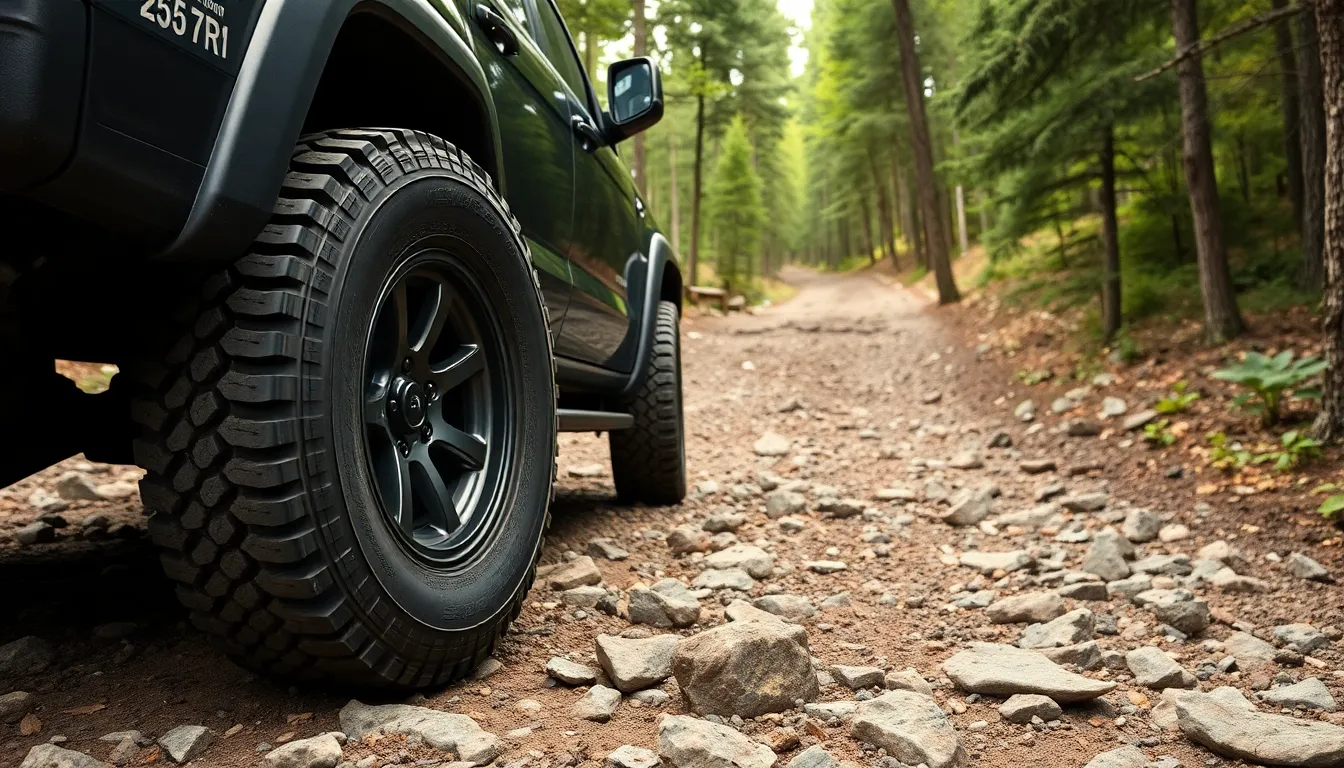
Key Benefits
255/75 R17 tires offer several advantages for truck and SUV owners. Their increased diameter of 32.1 inches provides better ground clearance compared to smaller alternatives, making them excellent for off-road adventures. Many drivers report improved obstacle clearance and trail capability after upgrading to this size.
The substantial 7.5-inch sidewall height creates superior cushioning that absorbs road irregularities effectively. This taller sidewall translates to enhanced ride comfort, especially on rough terrain where the extra rubber acts as a buffer between your vehicle and the road surface.
These tires excel in versatility, fitting perfectly on trucks and SUVs while performing admirably in both on-road and moderate off-road conditions. Their balanced design doesn’t sacrifice highway performance for off-road capability.
Traction and durability stand out as major strengths of this tire size. Models like the Yokohama Geolandar M/T G003 feature aggressive tread patterns that grip exceptionally well on mud, gravel, and rocky terrain while maintaining reliable handling on paved roads. Senior tire specialist Liam Kohn notes, “Customers who switch to the 255/75 R17 size consistently praise the improved traction they experience in challenging conditions without sacrificing on-road comfort.”
Notable Limitations
Even though their advantages, 255/75 R17 tires come with certain drawbacks. Speedometer accuracy becomes an issue due to their larger diameter, creating approximately a 1.4% difference compared to smaller tire sizes. Your vehicle might be traveling slightly faster than what your speedometer indicates, potentially requiring recalibration.
Fuel economy often takes a hit with these larger, wider tires. The increased rolling resistance requires more engine power to maintain speed, resulting in higher fuel consumption over time.
Fitment restrictions present another challenge with these tires. Their larger dimensions might not accommodate all vehicles without modifications to suspension components or fender clearances. Before purchasing, verify compatibility with your exact vehicle model.
Weight increase represents a final consideration. These tires weigh more than smaller alternatives, potentially affecting your vehicle’s acceleration, braking performance, and overall handling characteristics. The added unsprung weight can make your vehicle feel slightly less responsive in quick maneuvers.
Conclusion
Understanding the 255/75 R17 tire size is crucial for making informed decisions for your vehicle. At approximately 32.1 inches in total diameter with a 10-inch width and 7.5-inch sidewall height this tire size offers an excellent balance of ground clearance stability and comfort.
Whether you’re driving a light truck SUV or off-road vehicle these tires provide versatility for various driving conditions. The measurements translated to inches give you a clearer picture of how these tires will perform on your exact vehicle.
Remember that proper tire sizing affects everything from handling and fuel efficiency to speedometer accuracy and overall driving experience. By knowing exactly what those numbers mean you’ll be better equipped to choose the right tires that match both your vehicle’s specifications and your driving needs.
Frequently Asked Questions
What does the tire size 255/75 R17 mean?
The tire size 255/75 R17 is a standardized notation where 255 represents the width in millimeters, 75 is the aspect ratio (sidewall height as a percentage of width), R indicates radial construction, and 17 is the wheel diameter in inches. This standardized format provides crucial information about the tire’s dimensions that directly affect vehicle performance, handling, and compatibility.
What is the overall diameter of a 255/75 R17 tire?
The overall diameter of a 255/75 R17 tire is approximately 32.1 inches. This measurement is calculated by adding the 17-inch rim diameter to twice the sidewall height (2 × 7.5 inches). Knowing the total diameter is essential to ensure the tire fits properly within your vehicle’s wheel well without any interference.
How does a 255/75 R17 tire compare to other common sizes?
A 255/75 R17 tire is about 0.45 inches larger in diameter than a 265/70 R17 tire (creating a 1.4% speedometer error) and 1.18 inches smaller than a 275/75 R17 tire (resulting in a 3.6% speedometer variation). These differences can affect vehicle performance, handling, and speedometer accuracy.
What vehicles typically use 255/75 R17 tires?
The 255/75 R17 tire size is particularly well-suited for light trucks, SUVs, and off-road vehicles. These tires provide excellent ground clearance, load capacity, and cushioning on rough terrain. They are compatible with standard 17-inch rims and offer a good balance between highway comfort and off-road capability.
What are the benefits of 255/75 R17 tires?
Benefits include improved ground clearance, superior cushioning from the 7.5-inch sidewall height, versatility for both on-road and moderate off-road conditions, and enhanced traction and durability, especially with aggressive tread patterns. Many customers report better handling and improved driving experiences on rough terrain after switching to this size.
What are the limitations of 255/75 R17 tires?
Limitations include potential speedometer inaccuracies, decreased fuel economy due to increased rolling resistance, fitment restrictions for certain vehicles, and added weight that may affect acceleration and handling. It’s important to ensure this size is compatible with your vehicle before purchasing.
What is the recommended wheel width for a 255/75 R17 tire?
The recommended wheel width range for mounting a 255/75 R17 tire is 6.5 to 8.5 inches. This range makes the tire versatile for various wheel styles while ensuring proper tire performance. Using a wheel outside this range could negatively impact handling, wear patterns, and overall safety.
What does the “R” in 255/75 R17 stand for?
The “R” stands for radial construction, which is the most common type used in modern vehicles. Radial tires offer superior flexibility, durability, and road grip compared to older construction types. They are particularly well-suited for light trucks and SUVs, providing better ride comfort and performance.
